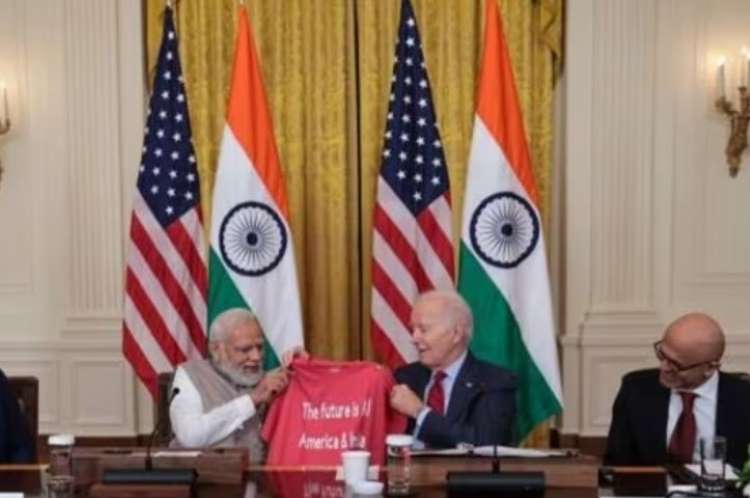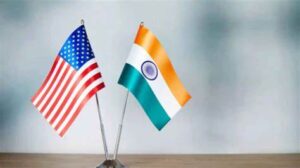
The National Democratic Alliance, led by Narendra Modi, has embarked on its third consecutive term with a narrow victory margin in the 2024 general elections. Over the past decade, India has firmly established itself as an influential regional and global player, thanks to its diplomatic advancements and impressive track record on the global stage. Bangladesh Prime Minister Sheikh Hasina’s preference for India to execute the $1 billion Teesta River basin project affirms India’s significant role in the region.
India’s G20 presidency reflected its commitment to inclusivity, sustainability, and innovation while addressing both regional and global challenges. Furthermore, India is increasingly acknowledged as a leader of the Global South, because of its efforts to voice the concerns of the poorer nations. Modi 3.0 is expected to build on these achievements and continue the foreign policy initiatives with the concept of Vasudhaiva Kutumbakam (The world is one family).
READ I Labour productivity decline across sectors threatens economic growth
Indo-US relations under Modi 3.0
India wants to emerge as a key player in fostering a rules-based order and enhancing multilateral cooperation in the Indo-Pacific, a strategically vital region encompassing major maritime routes and economic hubs. With an emphasis on ‘Security and Growth for All in the Region’ (SAGAR), India seeks to bolster its presence and influence in the region.
Modi 3.0 is expected to focus on connectivity projects like the International North-South Transport Corridor (INSTC), a 4,500-mile-long multi-modal network, and the Chabahar port in Iran. These projects aim to enhance trade links and reduce dependence on traditional sea routes, signifying India’s proactive approach to safeguarding maritime security and fostering peace and prosperity in the Indo-Pacific region.

Under Modi 3.0, the India-US relationship is poised to further deepen, driven by strategic alignment on concerns over China’s assertiveness in the region. The government will prioritise strengthening India-US ties across various fronts, including people-to-people connections, defence partnerships, strategic technology, and bilateral trade cooperation. The largest and oldest democracies will focus on enhancing investments and fostering innovation, particularly in critical sectors such as semiconductors, AI, green and renewable energy, and STEM. Modi 3.0 will push for co-development, co-production, and co-imagination.
This was evident during the recent bilateral National Security Advisors (NSA) meeting in New Delhi, where Ajit Doval and his counterpart Jake Sullivan discussed progress on the Initiative on Critical Emerging Technologies (iCET) and emphasised the need for more innovation and collaboration in areas like semiconductor manufacturing, clean energy, defence technologies, space, and machine learning.
To maintain momentum, the third edition of the INDUS-X Investor Summit will be held in Silicon Valley in September 2024. The focus will be on harnessing private capital for defence innovation and collaborating on joint challenges. These efforts highlight a robust partnership to bolster regional stability and economic resilience amidst evolving global dynamics.
Neighbourhood first policy
India’s neighbourhood first policy reflects its commitment to deepening partnerships with neighbouring countries based on shared interests, mutual benefit, and respect, contributing to regional peace, security, development, and prosperity. India is focusing on maintaining robust relations with BIMSTEC countries to foster regional cooperation in diverse areas. In the recent 2nd Retreat of the Foreign Ministers, held on July 11-12, 2024, in New Delhi, Modi underscored BIMSTEC’s role as an engine for economic and social growth in the region and stressed the critical importance of connectivity in regional integration.
This broader approach aims to deepen economic, cultural, and strategic ties with countries, reflecting India’s growing regional footprint and aspirations for greater influence in the Indo-Pacific region. Apart from the Teesta River project, India has reaffirmed its commitment by signing ten MoUs during Prime Minister Sheikh Hasina’s recent visit to India.
However, India faces challenges such as border disputes, cross-border terrorism, and influence from external powers, which continue to shape its neighbourhood dynamics. India’s relations with China and Pakistan, two nuclear-armed geopolitical rivals in the region, are likely to remain tense and complex in the future.
India and China are embroiled in a dispute over the succession of the spiritual leader Dalai Lama, with India supporting Tibet’s autonomy and China asserting control. This disagreement highlights geopolitical tensions and differing perspectives on Tibetan spiritual leadership, impacting stability and diplomatic relations in Asia and globally. Furthermore, China’s activities along the Line of Actual Control (LAC) indicate its intention to expand territory at India’s expense, posing a long-term strategic challenge. Actions like building villages in disputed areas, military bases, expanding infrastructure, and encroaching into Indian territory highlight this threat.
Similarly, relations with Pakistan remain complex due to India’s uncompromising stance on terrorism and cross-border infiltration. These two nations are likely to remain blocks in India’s neighbourhood policy during Modi’s 3.0.
Strategic and defence priorities
India’s defence and strategic priorities are tied to its geopolitical positioning amidst global power dynamics. Balancing relations with Russia, Iran, and western countries will be crucial for India during Modi 3.0. Seeking to maintain strategic autonomy and multi-alignment while leveraging partnerships for defence capabilities, joint production, and ‘Make in India’ will be the mantra for this term.
During the Russia-Ukraine and Israel-Hamas wars, India maintained a delicate diplomatic stance, positioning itself as a non-aligned but influential global power. Emphasising dialogue and diplomacy as means to end the violence, and stating that ‘This is not an era of war’ made its stance clear that war and violence will have no support. It also firmly condemned the West for its double standard on many issues.
India is deepening its defence and strategic tech ties with traditional allies like the US and other QUAD countries while maintaining relations with Russia and Iran. India’s priorities lie in its strategic interests, maintaining a fine balance among its partners, friends, and allies. This year, India will host the QUAD Leaders’ Summit comprising India, Australia, Japan, and the US, which balances strategic competition with China effectively.
India is expanding its satellite capabilities for communication, surveillance, and national security. Hence, space technology and its commercial use have emerged as a strategic frontier. We may see advancements in India’s role in global space security developments, military space capabilities, and joint space missions with like-minded countries during the next five years.
In an aspirational India, Modi 3.0 will be a critical phase in shaping its political and economic trajectory towards achieving ‘Viksit Bharat’ by 2047. Ensuring stable economic growth by creating more skilled and quality job opportunities, alongside implementing essential regulatory, structural, and judicial reforms, will promote effective governance and boost investor confidence. These measures, along with maintaining peace, national security, and regional stability, will fortify India’s international stature. Lastly, securing a permanent seat in the UN Security Council should be the diplomatic priority to achieve a strong status in the global arena.
(The author is Senior Programme Officer at CUTS International, a global public policy think tank. Views expressed are personal. Purushendra Singh of CUTS contributed to this article.)
